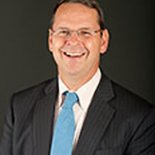Many people walk around with unruptured brain aneurysms without knowing it. Is it dangerous?
Neurosurgery expert Dr. Christopher Ogilvy explains what a brain aneurysm is and how risk factors, such as family history, can increase your odds of having one. Learn the key symptoms to look out for—like the worst headache of your life—and what you should do if your pain persists (hint: get a CT scan).
Dr. Ogilvy also shares why misdiagnosis is so prevalent and the latest advances in treatment technology that make surgery quick and low risk.
Bonus
Beware Hidden Sugars in So-called Healthy Foods
Selected Podcast
EP 926B - Brain Aneurysm Basics

Featured Speaker:
Dr. Ogilvy’s research and academic endeavors are in the areas of neurovascular disease including intracranial aneurysms, arteriovenous malformations and atherosclerotic disease.
Much of his work has been focused on studying outcomes of operative and endovascular procedures. In the laboratory, efforts have been focused on studying cerebral ischemia in the setting of neurovascular procedures, with a recent focus on the biology of intracranial aneurysms and the use of tissue engineering techniques to treat saccular intracranial aneurysms. He has pioneered several techniques in surgical procedures and is pursuing avenues of research in clinical treatment of patients with intracranial vascular problems using endovascular techniques.
Dr. Ogilvy is past President of the New England Neurosurgical Society and has served on numerous national neurosurgical committees. He is the Medical Director of the Brain Aneurysm Foundation, a national organization to help patients and families with brain aneurysms and to fund clinical and basic research. He is an Associate Editor for the journal Neurosurgery. He has published extensively, with over 300 original manuscripts and over 100 book chapters in the area of neurovascular surgery.
Christopher Ogilvy, MD
Christopher Ogilvy, MD, is the Director, Endovascular and Operative Neurovascular Surgery BIDMC Brain Aneurysm Institute and Professor of Neurosurgery, Harvard Medical School. Dr. Ogilvy is known nationally and internationally for his work in neurointerventional and operative procedures. He has been a moving force in the field of neurovascular disease for the last twenty years.Dr. Ogilvy’s research and academic endeavors are in the areas of neurovascular disease including intracranial aneurysms, arteriovenous malformations and atherosclerotic disease.
Much of his work has been focused on studying outcomes of operative and endovascular procedures. In the laboratory, efforts have been focused on studying cerebral ischemia in the setting of neurovascular procedures, with a recent focus on the biology of intracranial aneurysms and the use of tissue engineering techniques to treat saccular intracranial aneurysms. He has pioneered several techniques in surgical procedures and is pursuing avenues of research in clinical treatment of patients with intracranial vascular problems using endovascular techniques.
Dr. Ogilvy is past President of the New England Neurosurgical Society and has served on numerous national neurosurgical committees. He is the Medical Director of the Brain Aneurysm Foundation, a national organization to help patients and families with brain aneurysms and to fund clinical and basic research. He is an Associate Editor for the journal Neurosurgery. He has published extensively, with over 300 original manuscripts and over 100 book chapters in the area of neurovascular surgery.
Tagged under